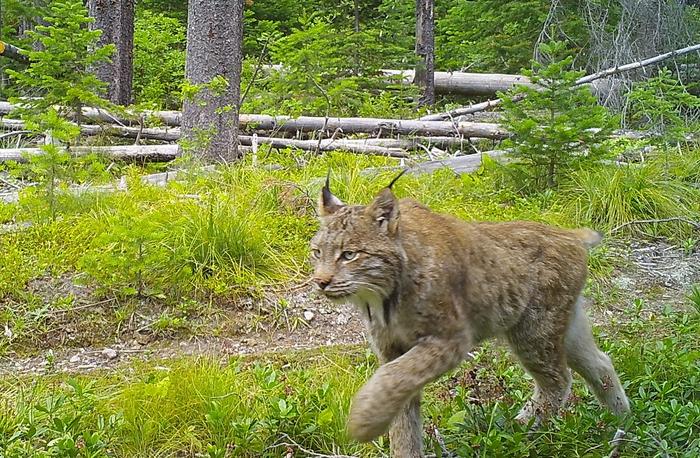Researchers from Washington State University and Trent University in Canada have recently published a study in the journal Biological Conservation that sheds new light on the potential future of Canada lynx in the United States. The study indicates that these elusive big cats might thrive in areas outside their current limited range, even when considering the effects of climate change.
The research team, led by wildlife ecologist Dan Thornton, created a model using factors such as temperature, precipitation, and land use over the past 40 years to determine suitable lynx habitat. They then applied this model to historical data from 1900 and validated the results using records from museums, hunters, and trappers.
The study revealed that in 1900, Canada lynx likely had a much larger suitable habitat in the U.S. than the few northern corners of the country where they are currently found. The model suggested that lynx may have roamed over a larger area in the Pacific Northwest, Rocky Mountains, Great Lakes region, and parts of New England.
“History matters even for wildlife,” said Thornton. “As part of the criteria for species recovery, we have to understand their historic distribution. Otherwise, how can we help recover a species, if we don’t know what we’re recovering to?”
The researchers also projected the model into the future, considering the years 2050 and 2070. Even when accounting for climate change effects, they found areas that could be suitable for lynx outside their current range but likely within historically occupied areas. These areas include central Idaho, northern Utah, and the region in and around Yellowstone National Park.
While Canada lynx are still abundant in Canada, their numbers have dwindled in the U.S., where they are currently only found in limited, northern portions of Washington, Idaho, Montana, Minnesota, and Maine. The study’s findings have conservation implications not only for lynx but also for other threatened species, as it proposes a new way of estimating a species’ historic range using habitat modeling validated by historical records.
The authors emphasize the importance of conserving lynx as a key predator for maintaining the integrity of forest ecosystems and highlight their iconic status in the mountains of the Pacific Northwest. They also hope that their approach to estimating historic range could help inform conservation efforts for other species.
“Thinking about historic range is really important. It’s also quite difficult because we often have limited data on where species were in the past,” Thornton said. “But there are potential ways to go about addressing that, and we wanted to provide one possible approach in this paper.”


